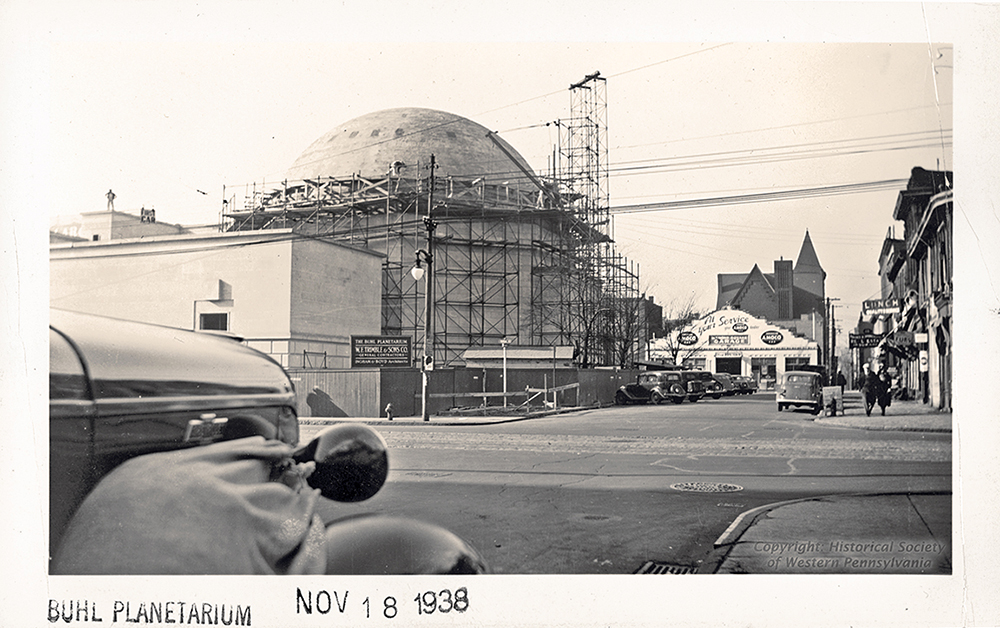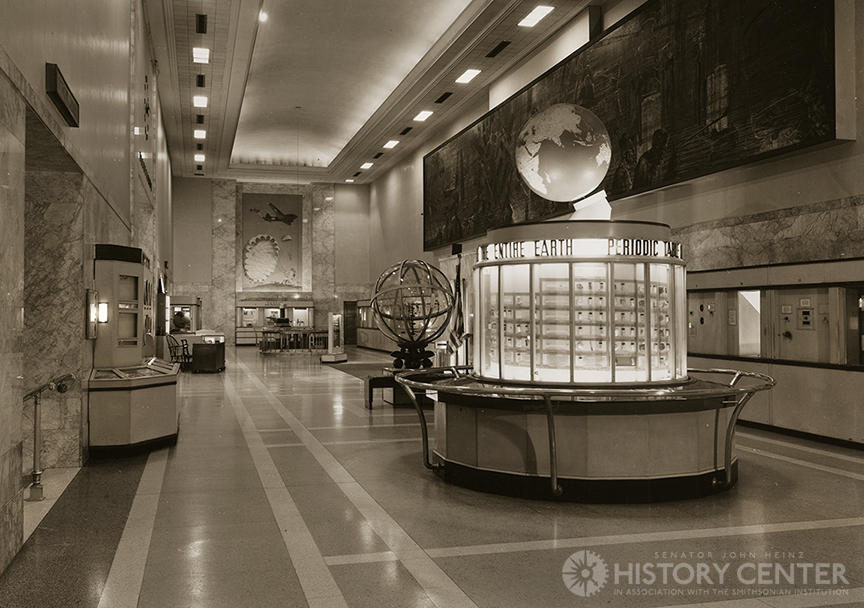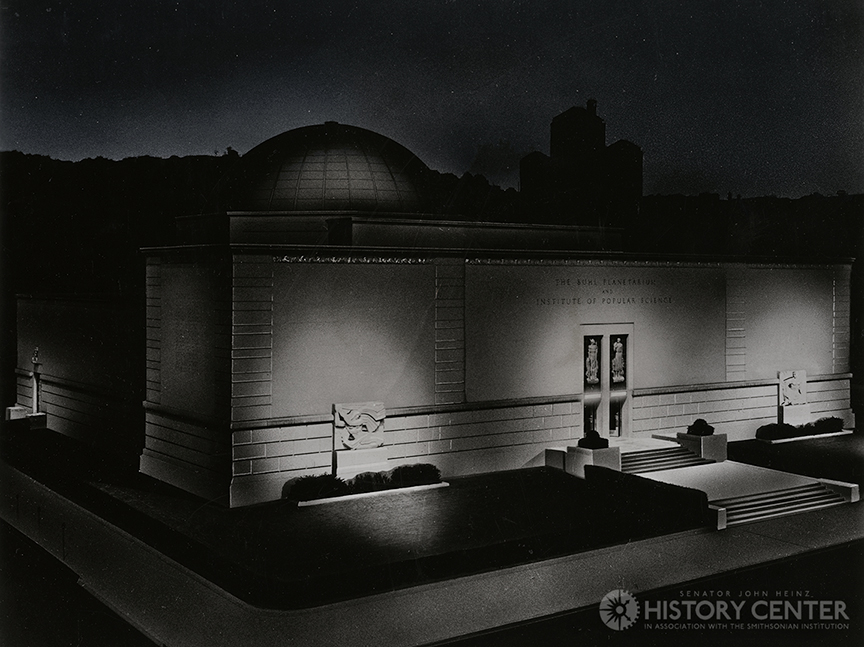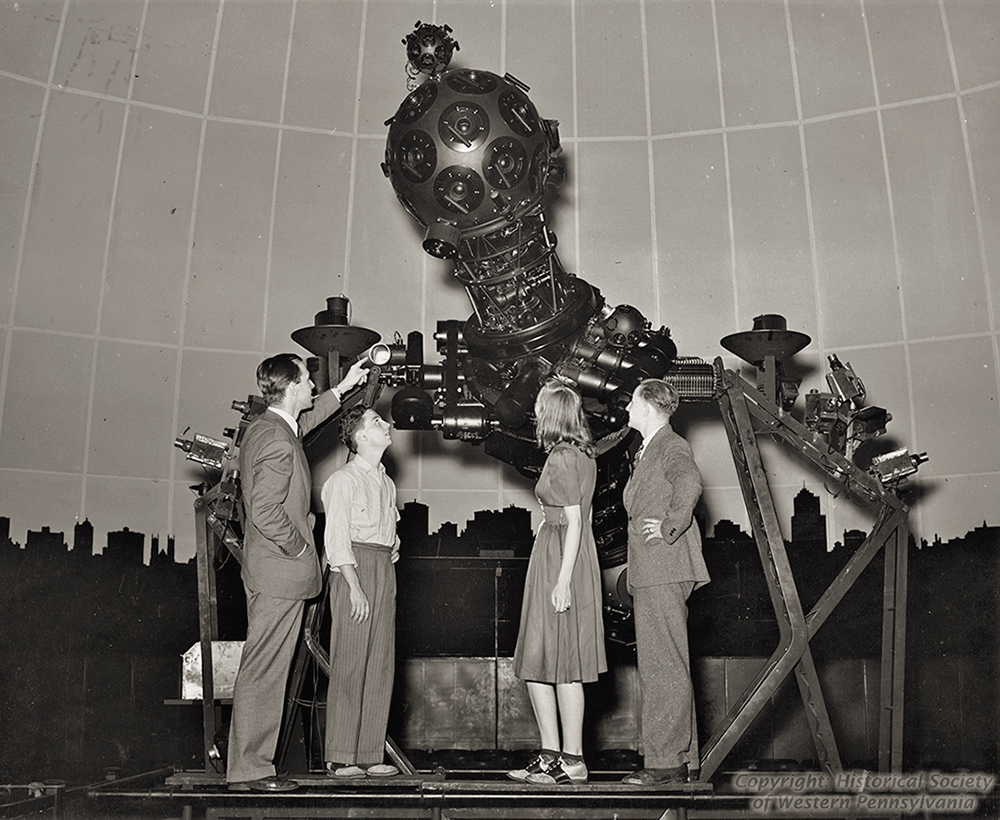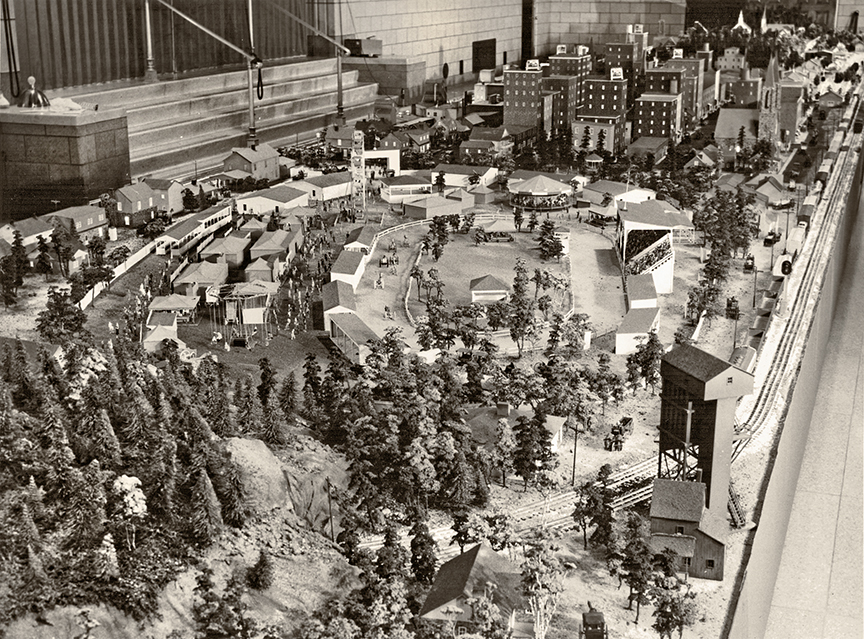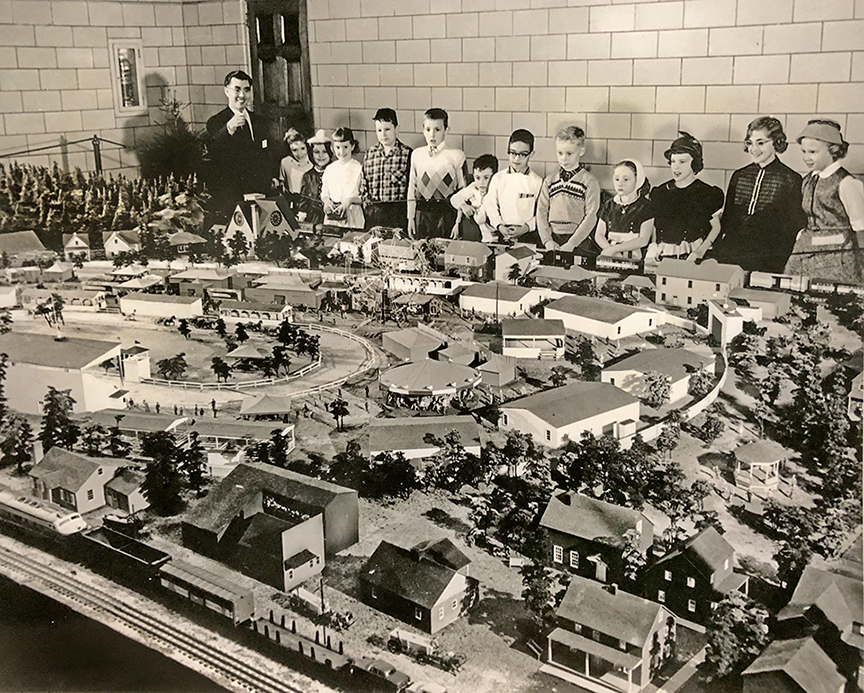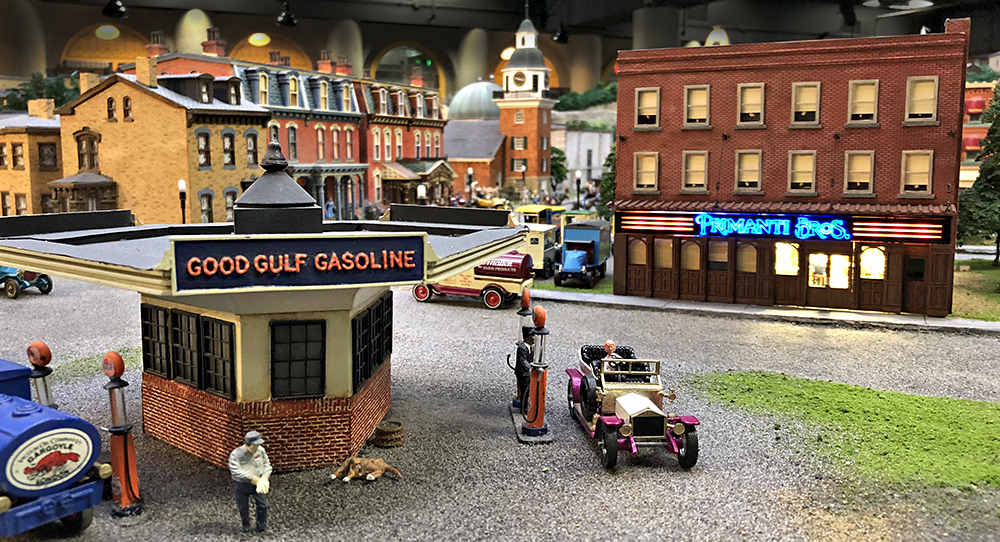
Every December, back in the 1970s, my family made its annual trip to Buhl Planetarium to visit the Miniature Railroad & Village. We had a model railroad that filled our basement too, but we marveled at the size and moving figures at the Buhl. It was always crowded and noisy, and sometimes the line wound outside, but when we made it down the final few steps, it was worth the wintry wait.
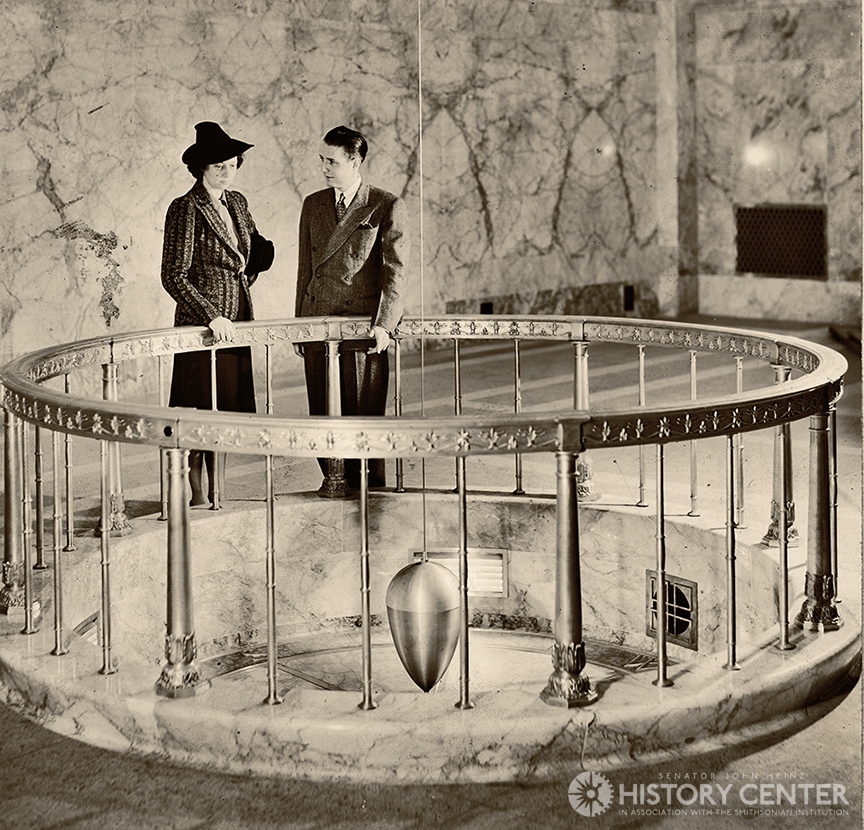
Buhl Planetarium and Institute of Popular Science opened in 1939 on Pittsburgh’s North Side, the fifth and then-largest planetarium in the U.S. The Classical-Deco building replaced the defunct and dilapidated Allegheny City Hall with hopes that it (and the adjacent library and post office) would spur a civic center like Oakland. Wide-eyed kids were mesmerized by exhibits like a Van de Graaf generator sparking wildly or the Foucault Pendulum knocking over pegs as the Earth rotated beneath it. Inside its dome, the Zeiss II Star Projector rose up to start every show like a big bug, but one that could project a night sky of stars and planets.
But we were there for Christmastown, an O-gauge layout twice the scale of the HO trains we had at home. For children, the eye-level action was enchanting: trolleys rolling down streets, kids swinging from trees on tires, airplanes spinning overhead, and of course, trains racing left and right, plunging in and out of tunnels.
The display originated decades before in Brookville, Pa., 80 miles northeast of Pittsburgh. Each Christmas, the Bowdish family put up an animated display. On Christmas Eve 1919, when the house played host to son George’s wedding, his brother Charles enlarged the display to entertain the guests, adding model buildings from Brookville. As word spread, he invited the public, and each year added more trains and motors, lights and buildings. By 1940, it had 97 buildings, 380 figures, 400 trees, and 160 pounds of cement, all inside his house.
With thousands coming to the house each year, Charles began looking for a new location where the display could be permanent. He offered the whole thing to outsiders and, in 1954, it moved to Buhl Planetarium. Known as The Great Christmastown Railroad — or just Christmastown—it included two model trains provided by Lionel. By 1956 the layout had five trains, and in 1964 the display was renamed Miniature Railroad & Village®.
Buhl Planetarium was renamed Buhl Science Center in 1982, and in 1987, it merged with Carnegie Museums of Pittsburgh. Needing more room, the center moved in 1991 and became the Carnegie Science Center. The old building has become part of the Children’s Museum of Pittsburgh.
The railroad measures 83 feet long by 30 feet wide, 60 percent larger than at Buhl. It continues to portray life in the region through the 1930s, from the Westinghouse Atom Smasher and Crawford Grill to a steel mill in Sharon and Forbes Field filled with 23,000 fans! For me, the Grand View Ship Hotel and Luna Park hold special meaning. This year’s addition is Primanti Bros. restaurant in the Strip District. Along with 14 aircraft and 167 vehicles, the hills are filled with a quarter million trees made from wild hydrangea. Staff members harvest the wildflowers each autumn and then glue them to “trunks” of twisted copper wire; each tree takes several hours.
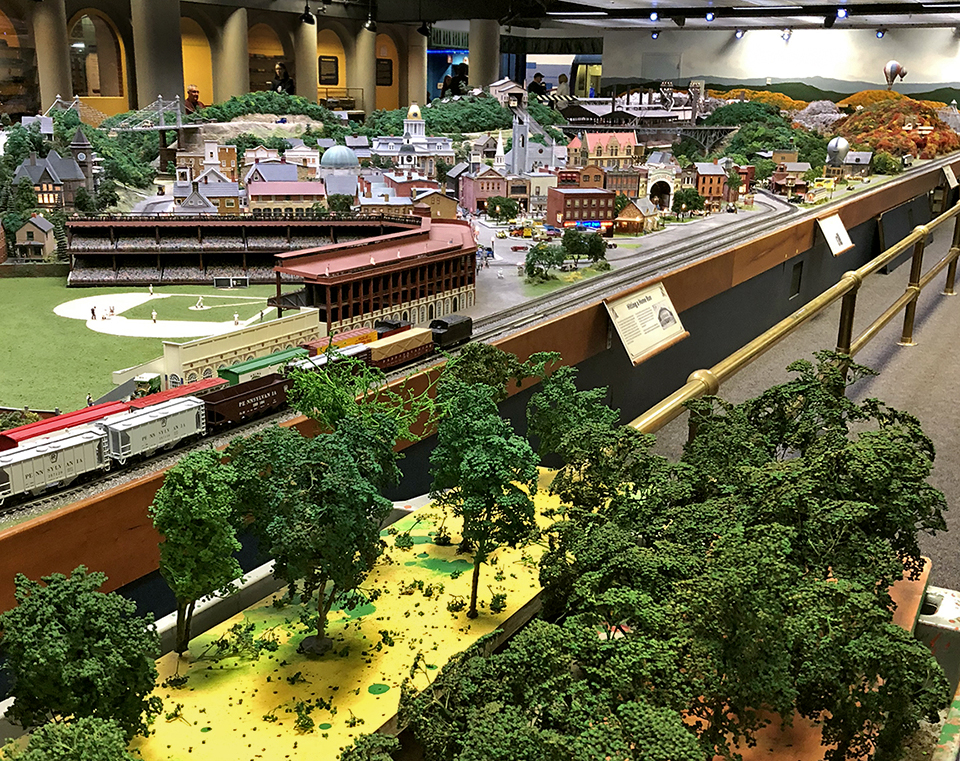
Patty Everly, curator of historic exhibits at Carnegie Science Center since 1991, says a small team of Miniature Railroad & Village staff maintains the display year-round, along with a Science Center technician for electrical work. Patty is the head model builder but says she loves to have her team help too: “Often, it’s the first time they’ve ever done modeling, but they have a great sense of pride at contributing to a new piece.” For the new Primanti Bros. building, the Center’s Fab Lab provided use of their laser cutter and guidance in helping the modelers recreate the neon sign.
Charles Bowdish might be surprised at the scale and new technologies, but I think he would be pleased to see old-school displays too, and the wonder they still inspire in visitors’eyes.
The Miniature Railroad & Village is included with admission to the Carnegie Science Center. For more holiday magic, come see the History Center’s A Very Merry Pittsburgh.
Further reading
“Building a Christmas Town,” Pittsburgh Press, December 2, 1956.
Carole A. Briggs, “A Good Show Cheap: The Genius of Charles Albert Bowdish,” Western Pennsylvania History (Winter 2008-09).
Brian Butko is the director of publications at the Heinz History Center.
